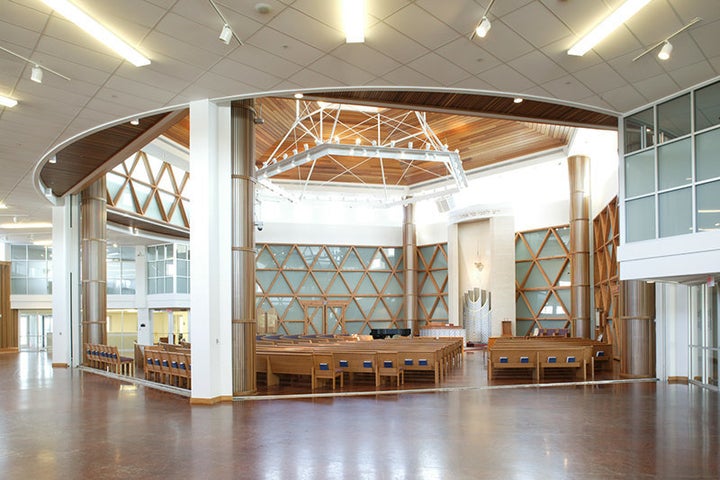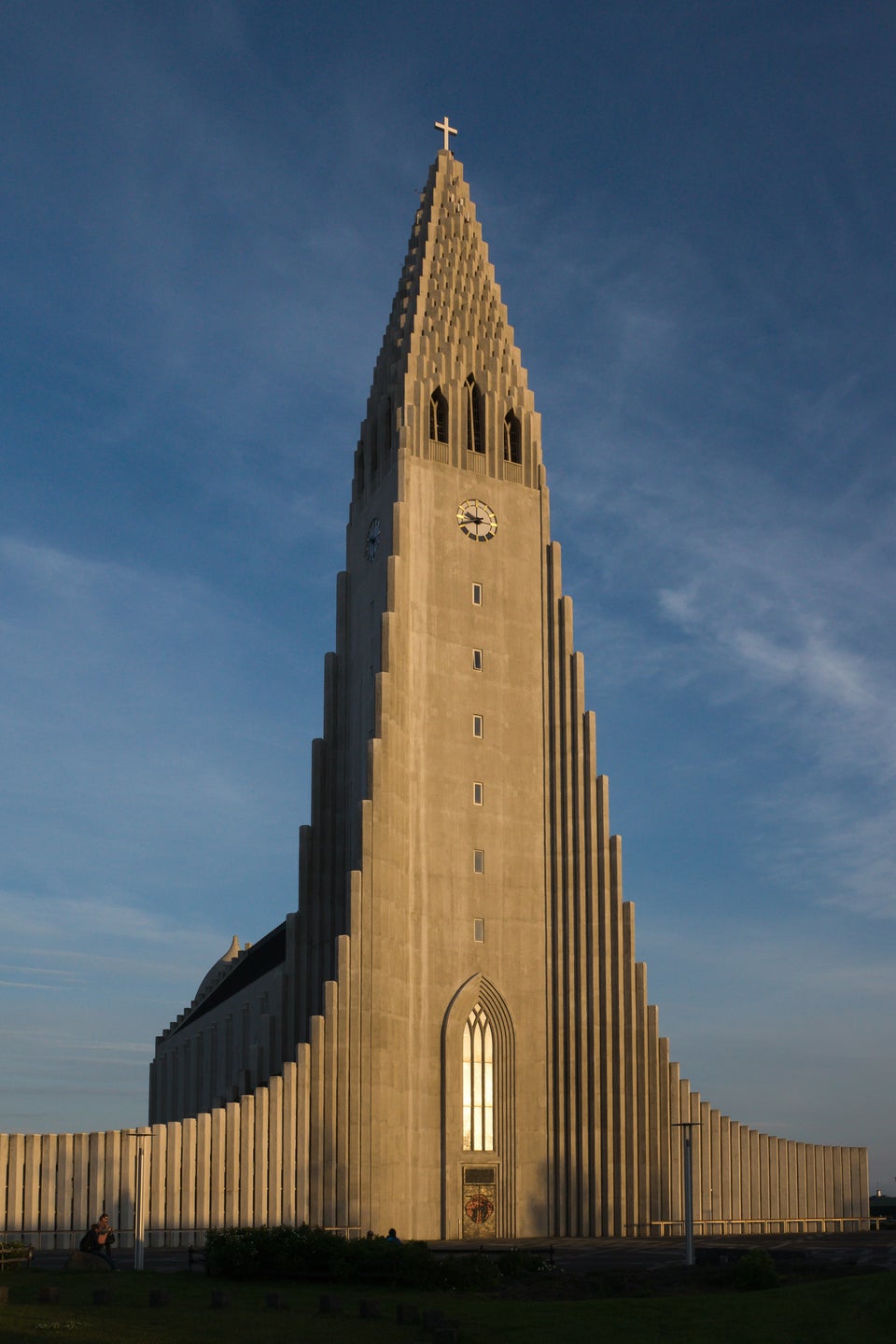
Sanctuary of Bet Shalom synagogue, in Minnetonka, Minnesota, designed by Bentz/Thompson/Rietow with a building committee that included those with disabilities.
(RNS) The 25th anniversary of the Americans with Disabilities Act is this Sunday (July 26), and much of the celebration will rightly focus on progress made in accessibility and inclusion in the workplace and public spaces.
Although the ADA didn’t require accommodation and accessibility in places of worship, many went ahead and did it anyway.
In 2000, when the Reform Jewish synagogue Bet Shalom in Minnetonka, Minnesota, began considering plans for a new building, they made a far-sighted decision. Jackie Hirsh — a longtime congregation member with multiple sclerosis, who used a wheelchair — was appointed to serve on the congregation’s architectural advisory committee.
“Our community did not want to do something for her, we wanted to do something with her,” recalled Rabbi Norman Cohen. This decision was a success, and a model for inclusion, with “a series of congregational meetings inviting everyone to participate and give input, based on what they would like to see in our new space.”
The new building, designed by Bentz/Thompson/Rietow in Minneapolis, included a gently rising floor to the pulpit so that everyone in the congregation — regardless of their physical ability — would approach that holy place the same way. And although Hirsh died about a year after the new sanctuary opened, she enjoyed worshipping there, and is remembered by the congregation with affection and gratitude. Her memorial service took place in the space that she helped to make possible.
Projects achieve the best results by involving, in a meaningful way, all affected parties at the outset of the process. That’s especially true when faith communities build, renovate or retrofit their sanctuaries, social halls and rest rooms to make them fully accessible, as is recommended by the book Accessible Faith: A Technical Guide for Accessibility in Houses of Worship, published by the Retirement Research Foundation. By including people with disabilities on building, grounds and facilities committees, congregations are more likely to prepare their faith communities for future members who might come, as well as retaining those who are already members, especially as they age.
Architects also benefit from working directly with people with disabilities. “In serving the client, it’s important for the architect to work alongside people with different abilities in order to directly accommodate their needs,” said Hiba Bhatty, a third-year graduate student in the Yale School of Architecture.
“Had I not grown up having a brother who uses a wheelchair, I wouldn’t have noticed how inaccessible public buildings can be. … Our mosque in Chicago has recently been renovated, and is now more accessible,” in part because her family and others with disabilities advocated for access.
Encouraging people with disabilities to participate in facilities planning at the beginning, and in a formal way, is evolving. However, some tentative steps have been taken by some extraordinary people.
In the rural community of Borculo, Michigan, not far from Grand Rapids, the Christian Reformed Church occupies a 125-year-old building built in a style familiar to the area. The sanctuary is a few steps above ground level, accessible by a concrete ramp and a motorized lift. But until a few years ago, the basement — where the bathrooms, social hall, library and classrooms are — could only be reached by steps and an awkward chair lift. So, with numerous seniors in the 300-member congregation, the church began to study how to best make the basement accessible.
One of the key members of the committee was Pat Huisingh, who had grown up in the church. Huisingh, who has muscular dystrophy, uses a power wheelchair. Until a few years ago, she was an insurance agent and active in her church, singing in the choir, teaching Sunday school and working with young people. Now she serves as a regional representative on disability issues for her denomination.
She made the case to the building committee, and then to the congregation, that they needed a full-sized elevator, no small expense for a church of that size. In part, she believes, “because I’ve grown up in the church, and they’ve seen the extent of my disability,” they voted to approve the elevator, which also accommodates other power chair users including a college student and an elementary schoolgirl.
Huisingh said this sends an important message to people from the area who visit Borculo Christian Reformed Church for weddings, funerals and vacation Bible school: “We don’t exclude.” As a result, such visitors may consider becoming members.
Sometimes it takes repeated efforts — and perseverance — to succeed. Mary Lou Luvisa found following the sermons at St. Barnabas on the Desert Episcopal Church in Scottsdale, Arizona, difficult, even with two hearing aids. So she went to the rector and got a respectful hearing, but that’s all. Later a change in rectors brought one that was vitally interested in the problems as others in the congregation also began to voice the same complaints.
In 2008, when the congregation made plans to renovate the social hall, Luvisa was appointed to the building and grounds committee. She made certain that included in the improvements were special, sound-absorbing ceiling and wall panels, which made an enormous difference. There remained the problem of worship in the sanctuary. So she researched various sound enhancement systems, and got a member of the congregation who was an engineer to prepare a report on what it would take to address the problem. In 2010, when the congregation was planning to refurbish the sanctuary, Luvisa convinced them to install a hearing loop — an unobtrusive sound system that magnetically transmits sound to hearing aids and cochlear implants.
The architectural design of a church, synagogue, temple, or mosque needs to reflect the heart, mind, and soul of all people who gather in worship, prayer and study.
Then, as in Isaiah 56:7, “… my house shall be a house of prayer for all people.”
Also on HuffPost:
